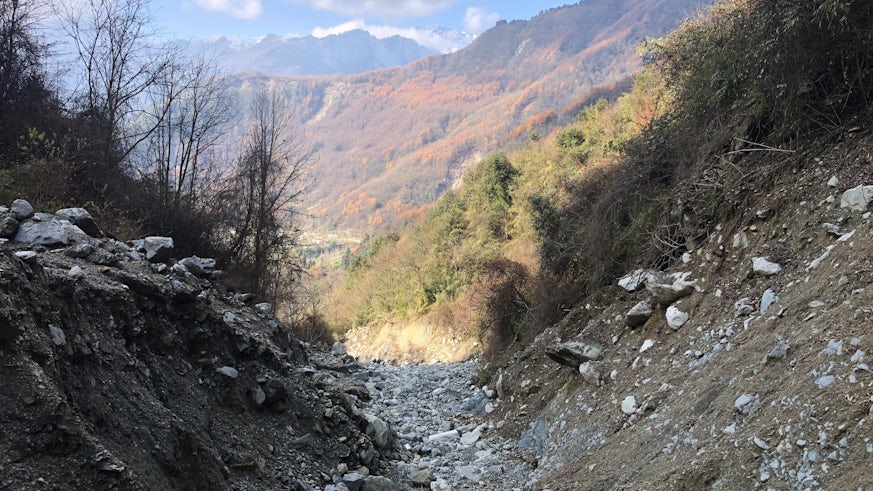PhD Insights: Exploring post-earthquake debris flows in China
14 April 2020

PhD student Erin Harvey spent two months in China to research post-earthquake debris flows and their evolution.
Earthquakes can mobilise large volumes (approximately 3 km3) of sediment within minutes, however much of this sediment remains on hillslopes in the years following an earthquake. Post-earthquake debris flows, which are defined as flowing masses of water and coarse and fine grained sediment, are the main process mobilising this loose hillslope debris to fluvial networks. Yet, the mechanisms that govern the triggering and run-out of these flows are poorly understood.
Erin is a PhD student in the School of Earth and Environmental Sciences. Her research explores the role of material grain size in controlling the genesis and evolution of post-earthquake debris flows.
In October 2019, Erin spent eight weeks based at the Chengdu University of Technology in Sichuan Province, China. Four of these eight weeks were spent in Wenchuan, China, measuring the grain size distribution of two post-earthquake debris flows. She was helped by local guides to navigate the mountainous terrain.

Wenchuan was the epicentre of a 7.9 Magnitude earthquake in 2008. The area still suffers from the earthquake today. Due to the abundance of loose sediment remaining on hillslopes, numerous debris flows occurred in 2019, leading to loss of life and damaged infrastructure.
Erin's research is funded by the NERC GW4+ Doctoral Training Partnership. Please contact her at harveyel1@cardiff.ac.uk to find out more about her research.
Share this story
For more information, visit the Water Research Institute website.



